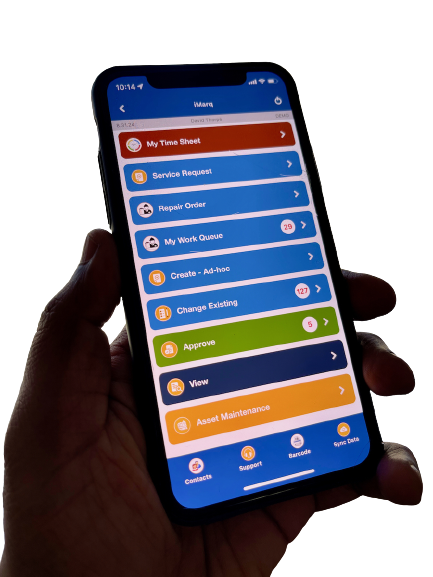The importance of real-time monitoring in asset management cannot be overstated. In industries where assets play a crucial role, the implementation of real-time tracking substantially eases the creation of comprehensive management strategies.
However, the importance of real-time monitoring lies in its facilitation of a proactive approach. This capability allows organizations to not just monitor, but strategically optimize their asset usage, ensuring enhanced longevity and operational agility. Consequently, this leads to more informed decision-making processes, cementing real-time monitoring as an indispensable tool in modern asset management.
But there is so much more that real-time monitoring can do for organizations.
Enhanced Visibility and Control
Real-time monitoring allows businesses to have constant visibility and control over their assets. This means they can track the location, status, and performance of assets in real time.
Mobile solutions like Connixt iMarq facilitate this by providing a comprehensive dashboard view that integrates data from various sources, offering a real-time snapshot of all assets. This improved visibility helps make informed decisions, reduce downtime, and optimize asset utilization.
Smart data accessibility via such dynamic dashboards simplifies arranging regular maintenance and offers daily insights into asset performance analysis. Having all information centralized plays a crucial role in synchronizing business objectives with continuity planning.
Improved Safety and Compliance
Safety is a paramount concern in asset management. Real-time monitoring ensures that any safety issues related to assets are identified and addressed promptly. iMarq, for instance, includes safety checklists and compliance reports that can be accessed and completed on mobile devices. This ensures compliance with regulatory standards and promotes a culture of safety within the organization.
Data-Driven Decision Making
Data is the lifeblood of strategic decision-making in asset management. Mobile solutions offer rich data analytics capabilities, providing insights into asset performance, maintenance needs, and operational efficiencies.
IMarq’s analyzes data in real-time to provide actionable insights, helping managers make data-driven decisions that improve overall asset management strategies.
Increased Operational Efficiency
By leveraging real-time data, mobile solutions significantly increase operational efficiency. Tasks such as inventory management, asset tracking, and work order management become more streamlined and accurate.
iMarq automates these processes, reducing manual errors and saving valuable time. This efficiency directly translates into cost savings and improved bottom-line performance.
Reduced Carbon Footprint
Real-time asset monitoring significantly contributes to reducing carbon footprints by ensuring efficient resource utilization, facilitating predictive maintenance, and optimizing asset lifespan. This approach leads to less energy waste, as real-time data can indicate the need for timely maintenance or adjustments, thereby maintaining optimal energy use.
Furthermore, by minimizing asset downtime and overproduction, real-time monitoring prevents the overuse of resources, while insights from data analytics enable operational changes that can further lower energy consumption. Additionally, in sectors where transportation is key, it optimizes routes and schedules, thus minimizing fuel consumption and emissions. This comprehensive approach underscores how real-time monitoring is pivotal in fostering sustainable, environmentally friendly asset management practices.
In Summary
An organization without precise, real-time data on an asset essentially operates in the dark. Monitoring assets’ performance and the value they contribute is vital for optimizing their use. By employing asset performance monitoring, wastage of resources and expenditures made on vague assumptions about an asset’s functionality can be effectively circumvented.
Mobile solutions like Connixt iMarq bring a host of benefits, from enhanced operational efficiency to improved decision-making and customer satisfaction. By integrating such solutions into their asset management strategies, businesses can stay ahead in the competitive landscape, ensuring their assets are managed effectively and efficiently.





